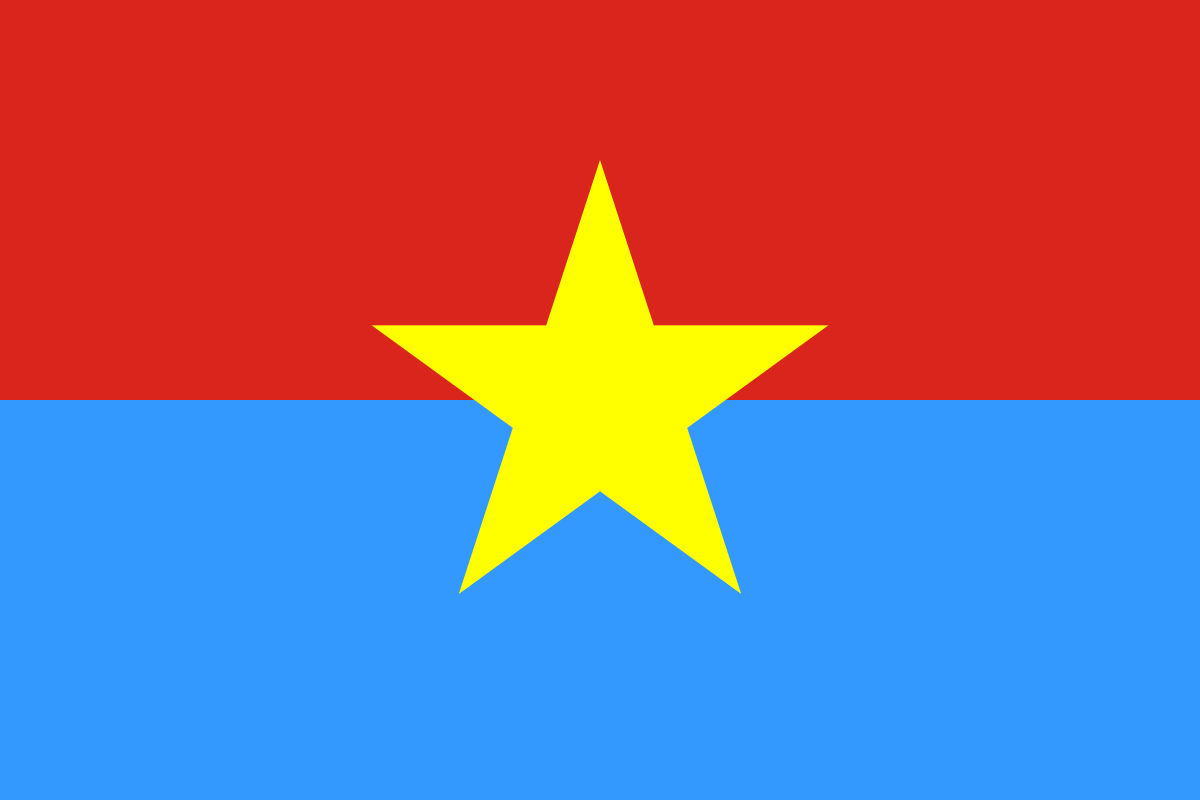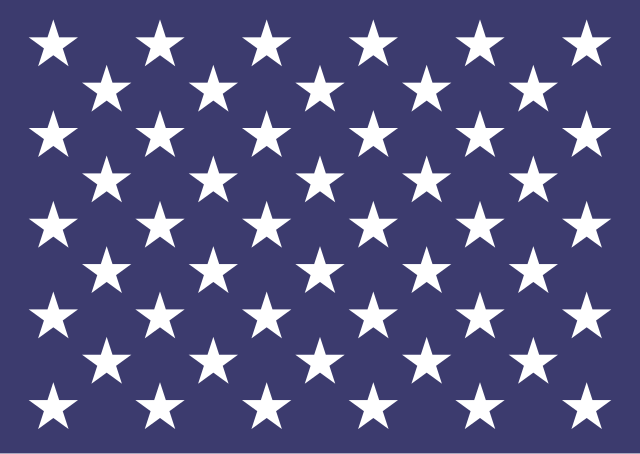Persekutuan Malaya (Federation of Malaya/ڤرسكوتوان ملايو)
Application
DEMOGRAPHICS
Population: 76,992,100
Official Language: Malay
Recognized Minority Languages: Cantonese, Mandarin, Batak, Minang, Sundanese, Javanese, Dayak, Dhivehi
Writing System: Jawi Script
Ethnic Groups:Religion:
- Malays (incl. Minang, Kutai and Banjarnese): 48%
- Chinese: 20%
- Sundanese: 12%
- Batak: 6%
- Javanese: 4.8%
- Others (Nias, Bugis, Orang Asli, Dhivehi, Tamil, etc.): 9.2%
- Sunni Islam: 60%
- Irreligious/Unaffiliated: 15%
- Confucian/Taoism: 7%
- Buddhism: 7%
- Christian (Nestorian, Syrian Orthodox, etc.): 6%
- Hindu: 4%
- Others: 1%
DIPLOMACY
(WIP)
ECONOMY
Currency: Malayan Rupee (MYR/₹) - ₹1 equivalent to US$ 2 (1990 Int'l/Geary-Khamis Dollar)
GDP: ₹4,495,000,000 (US$ 8,990,000,000)
GDP Per Capita: ₹45,350 (US$ 90,700)
Economic Policies:Economic Sectors: WIP
- Monetary Policy: The Malayan Rupee is regulated by the Federal Reserve Bank of Malaya, or the MCB (Malayan Central Bank) for short. It is a quasi-public corporation technically operating independently, but de jure is accountable to the Malayan Parliament. The MCB is governed by a Board of Governors consisting of 7 members nominated by the Prime Minister of Malaya. Each Board members must be approved by the Senate, the upper house of Parliament. There are over ₹200 billion notes in circulation around the world, making the Rupee one of the most common currencies used in global trade. Several articles of the Malayan Federal Reserve Act requires gold standard as the basis of money production. A State-owned company, MG (abbreviation of MalayaGold) owned the Grasberg gold mine in Papua, Lihir gold mine in Papua New Guinea, Fimiston, Telfer, and Cowal mines in Australia, as well as several others around the world. The Malayan Government periodically receives seigniorage returns. National Debt, according to the Malayan Constitution, shall exceed no more than 60% of the GDP. The MYB practices fractional reserve banking. The Malayan Government through its sovereign wealth fund, Kuala Holdings, controlled various estates ranging from oil drills to plantations across the world.
- Fiscal Policy: Since the signing of the Articles of Confederation - first constitution of Malaya - well over two hundred years ago, government spending has traditionally been relegated to individual states. The economic boom period about 100 years after the Federation saw significant federal government spending in the construction of numerous railway projects, seaports, and later highway systems. The Malayan Government has traditionally attempted to balance the amount of income and expenditures, however, in several boom periods, the budget tends to be greater than the income. In between 2291 to 2320, federal receipts of the administrative budget were 5.50 percent of Gross National Product, GNP, while federal expenditures were 9.77 percent of GNP. These were the years that Malaya experienced a peak low unemployment. Since then, the federal expenditure budget tends to decrease, while unemployment goes up, an effect of Malaya's transition from a developing to developed economy. Recently, the government began to adopt several key points of the Modern Monetary Theory (MMT), thereby increasing fiscal spending.
GEOGRAPHY
Map of the Federation of Malaya
Capital (and largest city): Singapore, FCD
Overview: The Federation of Malaya consists of 23 states and 5 territories, including the Federal Capital District of Singapore.
States of Malaya:Districts and Territories:
- State of Aceh: Corresponds to the Indonesian Province of Aceh. The State is a major trading center and technological hub, especially in the city of Banda Aceh and Sabang.
- State of Batak: Corresponds to the Indonesian Province of North Sumatra. A well-developed region with an unique culture separate from most Malay Sultanates, the State of Batak is one of the most populous regions in the Federation.
- Commonwealth or Nias and Mentawai: The islands west of Sumatra are all included in the Commonwealth. Known for its unique cultural heritage and lush tropical landscape, the Commonwealth is a major tourist destination.
- State of Kedah: Corresponds to the Malaysian states of Penang, Kedah and Perlis. A major port and tourism center due to its preserved Malayan Sultanate historical places.
- State of Johor: Corresponds to the Malaysian state of Johor. A major industrial and agricultural center.
- Commonwealth of the Nine States and Malacca: Corresponds to the Malaysian states of Negeri Sembilan and Malacca. The industrial center of Malaya is located in this state. The fourth major seaport of Malaya, located in Malacca, is in the Commonwealth.
- State of Perak: Corresponds to the Malaysian state of Perak. A major industrial base in the Federation.
- State of Selangor: Corresponds to the Malaysian state of Selangor, Kuala Lumpur, and Putrajaya.
- State of Pahang: Corresponds to the Malaysian state of Pahang. The state boasts a large biodiversity due to its pristine tropical forests in the mountains. Also a cultural center of indigenous peoples.
- State of Terengganu: Corresponds to the Malaysian state of Trengganu. Several minor South China Sea ports are located here.
- State of Pattani: Corresponds to the Thailand provinces of Yala, Narathiwat, Pattani, and Songkhla. Several military bases and historical forts are located here due to its significance as a border state.
- Commonwealth of Siak and Riau-Lingga: Corresponds to the Indonesian province of Riau and Riau Islands. Historically a major thalassocratic Sultanate, the state holds numerous historical buildings and sites that is preserved as a cultural heritage. A major hub of tourism due to its pristine forests, and a center of biodiversity. The state is of importance to the Malayan energy sector due to the abundant oil reserves. Malaya's second-largest port, Batam, is located in the state.
- State of Minangkabau: Corresponds to the Indonesian province of West Sumatra. A largely mountainous region known mostly for its ricefields and scenic landscape. There is an important agricultural sector in the state.
- State of Jambi: Corresponds to the Indonesian province of Jambi. An important center of palm oil production.
- State of Bengkulu: Corresponds to the Indonesian province of Bengkulu. A center of fishing and coal production.
- State of Palembang: Corresponds to the Indonesian province of South Sumatra. The historic and cultural center of all Malaya, Palembang is considered as the founding state of the nation. The ancient Srivijaya Empire's capital is preserved in its ruined state in Palembang. Recently, it has emerged as a financial and technological center.
- Commonwealth of Bangka and Belitung: Corresponds to the Indonesian province of Bangka and Belitung. It has a significant ethnic Chinese population. The economy relies upon lead mining, palm oil production, and tourism.
- State of Pasundan: Corresponds to the Indonesian province of Banten, West Java, and Jakarta SCR. The third largest port of Malaya, Jakarta, is located in the state. It has traditionally been the agricultural center of Malaya. The state is home to an emerging financial and industrial center, largely boosted by urbanization.
- State of Brunei: Corresponds to Brunei Darussalam and the Malaysian states of Sabah and Sarawak. A thriving energy sector exists in the state due to the large oil deposits.
- Commonwealth of Lan Fang: Corresponds to the Indonesian province of West Kalimantan. The only ethnic Chinese-majority state in Malaya, Lan Fang is known for its expansive and lush tropical rainforests. More than half of Malaya's palm oil production is made in Lan Fang.
- State of Dayak: Corresponds to the Indonesian province of Central Kalimantan. The state has a major palm oil industry, and is a center of Dayak culture.
- State of Banjar: Corresponds to the Indonesian province of South Kalimantan. Once the heartlands of the Banjar Sultanate, it has an energy-oriented economy with coal mining being the main activity.
- State of Kutai: Corresponds to the Indonesian province of East and North Kalimantan. The source of almost all of Malaya's coal production.
- Singapura Federal Capital District: Corresponds to Singapore. The capital of Malaya, and one of the world's major financial hubs. Several of the world's largest corporations are traded in the Singapore Stock Exchange. The FCD is home to the Port of Singapore, one of the world's largest ports. It also has a significant technology sector.
- Territory of Andaman and Nicobar Islands: Corresponds to the Indian Territory of Andaman and Nicobar. For the most part rural and agrarian. Most of the territory is federal land, including national parks, due to its relatively low population.
- Territory of Dhivehi: Corresponds to the Maldives. Its economy relies on the vibrant tourism sector.
- Territory of Melaka Baru: Corresponds to the island of Reunion. The island of New Malacca is discovered by Johorese explorers and is subsequently settled as a trading base in the past.
- Territory of Pulau Sultan: Corresponds to Christmas Islands, Cocos, and Keeling Islands. Mostly uninhabited except for weather stations and military bases.
HISTORY
(WIP)
POLITICS
Prime Minister: YAB (The Rt. Hon.) Tan Sri Dato' Haji Ibrahim Saifuddin Ali (PD)
President: YAB Tan Sri Dato' Lim Eng Chow (PN)
President of the Senate: Tan Sri Dato' Ridwan Yusuf (PD)
Speaker of the House of Representatives: Tan Sri Dato' Nestor Petros Sibarat (SDM)
Time Zone: UTC+8 (MST)
Date Format: dd-mm-yyyy
Drives on the: Left
Calling Code: +62
Internet TLD: .fm (Federation of Malaya)
Government System: Federal Representative Democracy based on the Westminster-Washington system (akin to the Australian gov't system)
Legislature:Political Parties:
- Senat Malaya: The Senate is the upper house of the bicameral Parliament of Malaya, the lower house being the House of Representatives. Senators served for a maximum of 6 years a term. There is a term limit of two for each individual. The composition and powers of the Senate are established in the Constitution of Malaya. There are a total of 51 Senators: 46 are elected from each of the 23 Malayan states regardless of population, each state being eligible for 2 Senators, and 1 from each of the Malayan territories (including the Federal Capital District of Singapore). Senators are popularly elected under the single transferable vote system of proportional representation. The Senate is vested with a multitude of powers, including the capacity to reject all bills, including budget and appropriation bills, initiated by the government in the House of Representatives. Senators could propose all bills except those relatied to budgeting, of which the House of Representatives retains the sole right. As a result of proportional representation, the chamber features a multitude of parties.
- Dewan Rakyat: The House of Representatives is the lower house of the bicameral Parliament of Malaya, the upper house being the Senate. There are no term limits for Representatives, and they serve for 3 years in a term. Malaya features a proportional representation system wherein each states and territories are divided into electoral districts. Elections for members of the House of Representatives are often held in conjunction with those for the Senate. A member of the House may be referred to as a "Member of Parliament" ("MP" or "Member"), while a member of the Senate is usually referred to as a "Senator". The government of the day and by extension the Prime Minister must achieve and maintain the confidence of this House in order to gain and remain in power. The House of Representatives currently consists of 240 members, elected by and representing single member districts known as electoral divisions (commonly referred to as "electorates" or "seats"). The number of members is not fixed but can vary with boundary changes resulting from electoral redistributions, which are determined from regular Malayan census. As such, there is a common occurence of gerrymandering in the process. It uses the first-past-the-post election system.
- Parti Demokrat (PD):
The largest party in Malaya by far, the Democratic Party is a catch-all, big-tent, centrist political party. Its members came from diverse backgrounds and of all ethnic groups, and Democratic MPs represent almost all classes of society. There are several different factions in the Democratic Party, with the largest being a centre-right faction led by the current Prime Minister. Governing party.- Pakatan Nasional (PN):
pakatan Nasional (National Alliance) is a right-wing and Malayan nationalist party. The PN's backgrounds are not as diverse as its other Government coalition counterparts. Consisted mostly of ethnic Malays, the PN advocates for tighter border control, less government spending, an end to social programs such as universal healthcare, and tighter immigration control. Government coalition.- Sosial Demokrasi Malaya (SDM):
Being the second-largest party in the Parliament, the Malayan Social Democracy advocates social programs such as welfare, universal healthcare, and free education. The SDM presents itself as an obvious left-leaning party and enjoys the support of younger Malayans. Its members came from even more diverse ethnic background than the DP. The SDM has been the governing party for more than 20 years until they lost the last election by a very small margin to the DP. However, they still controlled the House of Representatives. Opposition party.- Gerakan Hijau (GH):
The Green Movement is the third-largest opposition party. It is popular among younger Malayans and enjoys the donations of various NGOs. It advocates for the adoption of green energy and decreasing traditional, fossil fuel and coal energy sources. One of the most successful GH bills included the ban of single-use plastics in several states. Opposition coalition.- Libertarian (L):
The Libertarian Party supports laissez-faire capitalism and the abolition of the modern welfare state. It adopts pro-civil liberties and pro-cultural liberal approaches to cultural and social issues. It is the second-largest opposition party in parliament. Libertarians seek to maximize political freedom and autonomy of individual states. Opposition coalition.











